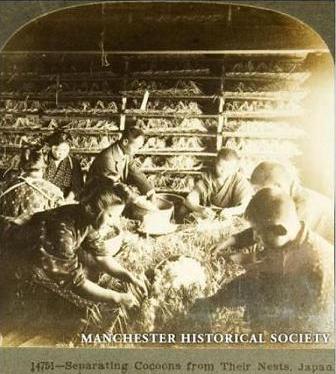



The production of the cocoon is the work of three days, but after the first twenty-four hours the worm is hidden from view. First it makes a loose case, and within that it builds it cocoon. The worm is commonly said to spin; what it really does is to move its head very rapidly in short figure 8 loops, continually expressing the silken thread from the spinneret near its mouth. The two threads unite as one as they leave the double orifice, and the united thread hardens immediately on exposure to the air. At first the worm works very rapidly, expelling from seven to twelve inches of silk in a minute; but later its speed is reduced by half. The thread averages 400 to 500 metres in length.
Cocoons vary in color with the different species and variets of spinners; they may be white or yellow, lemon or green. A week after the cocoons are spun they are taken from their resting places. The best are selected for breeding and are allowed to develop into moths and lay their eggs. The rest are exposed to the sun, or steam or hot air, to kill the chrysalis that their silk may not be cut and spoiled by the excaping moth.
From the collection of the Manchester Historical Society.

 )
)